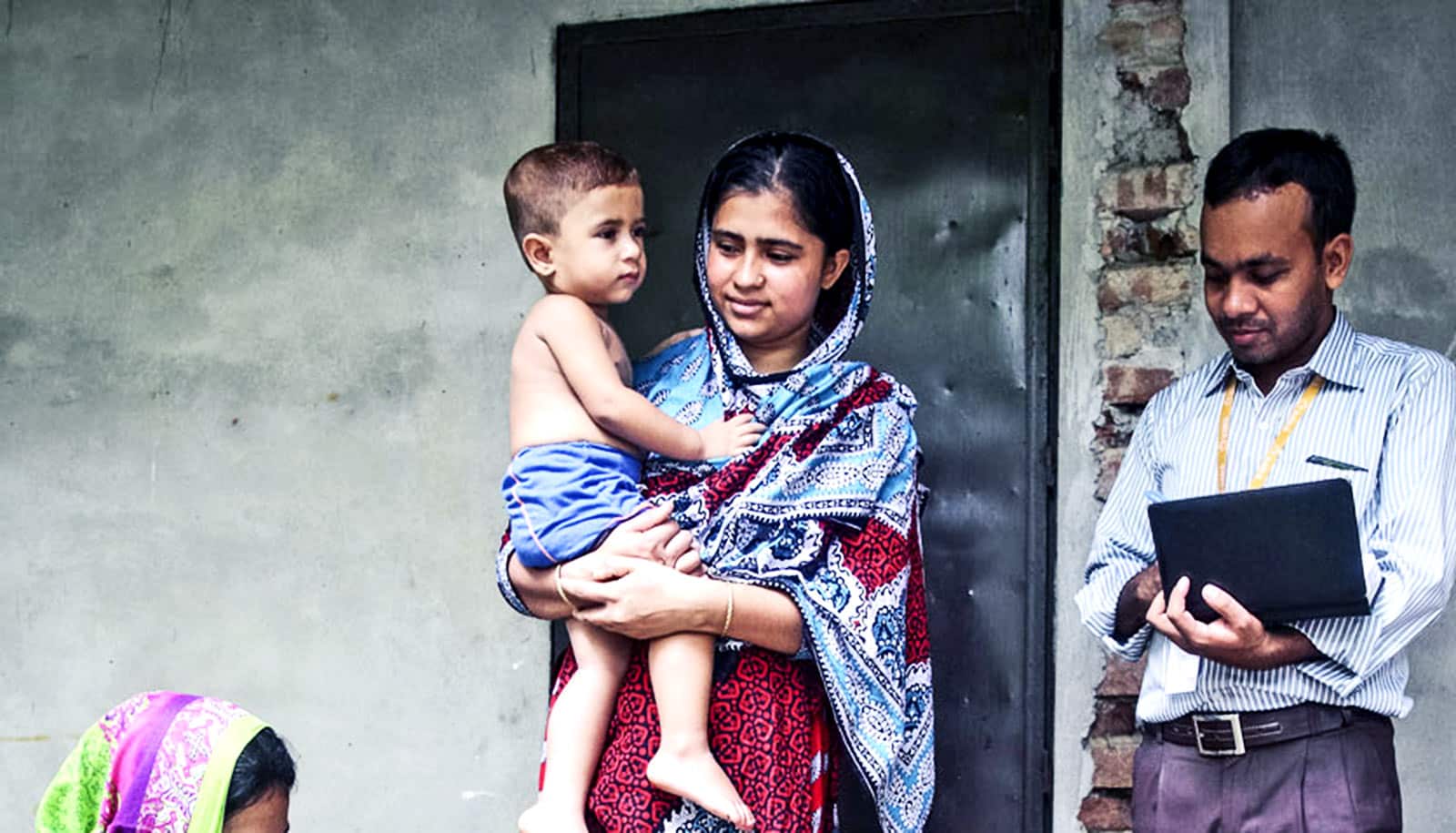Children born into housing compounds with improvements in drinking water quality, sanitation, and handwashing infrastructure were not measurably taller after two years compared to those born into compounds with more contamination, a new study suggests.
Although children who received the interventions were significantly healthier overall, and despite mounting research over the last decade linking poor sanitation to stunted growth in children, sanitation improvements seemingly did nothing to improve growth and development.
The WASH Benefits Bangladesh trial is one of the first to examine what are known as water, sanitation, and hygiene (WASH) interventions as a way of improving children’s growth in low-income communities.
How well a child grows in the first year can indicate overall well-being and is linked to both survival and brain development. Interventions were proposed as a way of improving child growth and are being implemented in many communities around the world, but haven’t been rigorously tested.
“Part of what we learned is that this problem of stunting is not going to be easily fixed by a little bit of attention to water, sanitation, and hygiene,” says Stephen Luby, professor of medicine in the division of infectious diseases and geographic medicine at Stanford University.
“Modest efforts to marginally improve environments are not going to be sufficient. If we want children in the lowest-income, most resource-constrained environments to thrive, we’re going to need to make their environments radically cleaner.”
Children in the Bangladesh trial who received nutritional supplements in addition to WASH interventions did grow taller and were less likely to die during the study—but WASH interventions alone didn’t improve growth.
Researchers examined the health and growth of children from over 5,000 pregnant women in rural Bangladesh after two years. The mothers were grouped according to geographic clusters and randomly assigned to one of six interventions or a control group.
“…these interventions, even with high uptake, likely didn’t clean the environment enough to impact child growth…”
The six interventions included: integration of chlorinated drinking water; upgraded sanitation facilities; promotion of handwashing; a combination of chlorinated drinking water, upgraded sanitation, and handwashing promotion (WASH) efforts; nutritional supplements; or WASH and nutritional supplements.
After two years, nearly all the interventions reduced diarrhea. Although expected, the result is important because it suggests that families did adhere to the interventions. It also creates hope that WASH interventions could beat back one of the greatest killers of children globally—the World Health Organization estimates 361,000 children younger than 5 years of age die as a result of diarrhea each year.
Of all the interventions, providing nutritional supplements in addition to combined water, sanitation, and handwashing interventions had the greatest effect on curbing mortality, in addition to improving growth. Children receiving this intervention were 38 percent less likely to die compared to children in the control group.
‘Clean’ drinking water in Bangladesh is often unsafe
Past research showed that WASH strategies are effective at reducing diarrhea and improving child health, Luby says, but evidence of the impact of these strategies on child growth and development has been sparse.
In response to this lack of data, Luby began laying the groundwork for the current study more than a decade ago. One of his concerns was ensuring the group developed a rigorous and transparent trial design that included close community partnerships and innovative ways of encouraging village residents to adopt new behaviors. Unless most people in the community adopted the interventions, the results wouldn’t be conclusive.
With the large number of children in the study, good adoption of the interventions, and careful design, the study had the statistical power to detect small effects, so Luby was able to note the absence of growth improvement with WASH interventions was genuine.
“We developed an intervention that the community really liked and were able to achieve really high uptake,” says Luby, who is also director of research for Stanford Global Health. “What this tells us is that these interventions, even with high uptake, likely didn’t clean the environment enough to impact child growth. This is a disappointment, but it also helps to provide direction as a way forward.”
Prenatal lipids boost health of babies in Bangladesh
While a great amount of knowledge has been gained from the primary outcomes data, Luby and his team are continuing to analyze the broader range of health benefits that could have resulted from these successfully integrated WASH strategies, including the impact on bacterial, parasitic, and viral infections, anemia and nutritional biomarkers, and child cognitive development.
Scientists from the University of California, Berkeley; Johns Hopkins Bloomberg School of Public Health; the University of California, Davis; Emory University; the University at Buffalo and the International Centre for Diarrhoeal Disease Research, Dhaka, Bangladesh are coauthors of the study, which appears in The Lancet Global Health.
The Bill & Melinda Gates Foundation supported the work.
Source: Stanford University



